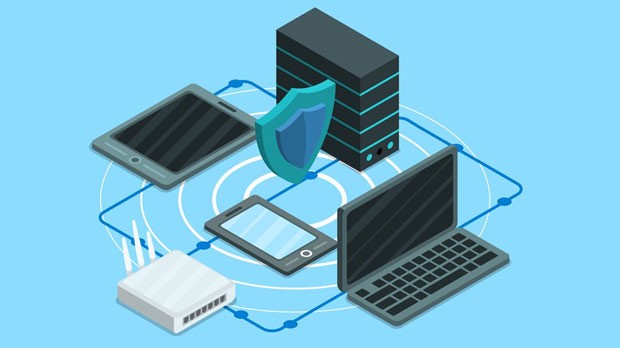When it comes to choosing the right proxy package for your business, two popular options are the customized PYPROXY proxy package and the standard package. Each of these has its own advantages depending on your specific needs and requirements. This article will compare these two packages by discussing their applicable scenarios, cost-effectiveness, and which one might be best suited for different use cases. Whether you're running a small business or a large-scale operation, understanding these differences will help you make a more informed decision. Introduction: What is PyProxy?Before diving into the comparison, it’s essential to understand what PyProxy offers. PyProxy is a powerful proxy solution that helps users maintain online anonymity, protect their data, and bypass geographical restrictions. Depending on the type of service and the level of customization needed, businesses and individuals can choose between a customized PyProxy proxy package or a standard one. The core difference between these packages lies in flexibility, scalability, and the level of support provided. Let’s explore these two options in detail. Understanding the Standard PyProxy PackageThe standard PyProxy package is typically designed for small to medium-scale operations that require basic proxy services. This package is perfect for individuals or businesses that need an easy-to-use, cost-effective solution without requiring too many specialized features. Key Features of the Standard Package:- Fixed IP Allocation: The standard package often comes with a fixed number of IP addresses, meaning the number of users or connections is limited.- Basic Security Features: While it provides essential security features such as encryption and anonymity, it may not offer the same level of protection or advanced security protocols as customized packages.- Less Flexibility: Customization is limited. This package is ideal for those who don’t require high levels of customization or specialized proxy configurations.- Lower Cost: The standard package is more affordable, making it accessible for small businesses, startups, and individuals with basic proxy needs. Best Use Cases for the Standard Package:- Personal Use: Ideal for individual users who need a secure and simple proxy solution to mask their IP or access restricted content.- Small Business Operations: Small businesses with fewer online activities or limited need for proxies can benefit from the low-cost, fixed package.- Low-to-Medium Traffic: If the network traffic and the number of users are moderate, the standard package offers sufficient capacity. Understanding the Customized PyProxy PackageOn the other hand, the customized PyProxy proxy package offers more flexibility, scalability, and advanced features. It is tailored to meet specific business requirements, offering a more robust and versatile proxy solution. Key Features of the Customized Package:- Scalable IP Allocation: Customized packages allow for the allocation of additional IP addresses based on user demand, making them more scalable for large operations.- Advanced Security: Includes additional layers of security, such as dedicated proxies, encryption protocols, and enhanced anonymity features.- Customization Options: This package can be configured according to the user’s specific needs, allowing for custom routing, geo-location targeting, and load balancing.- 24/7 Support and Maintenance: The customized package often comes with priority support, ensuring that businesses get timely assistance in case of any issues.- Higher Costs: Due to the added features, the customized package is generally more expensive. However, it provides superior performance and a greater level of support. Best Use Cases for the Customized Package:- Large Businesses or Enterprises: Enterprises that need to handle large volumes of data traffic or complex online operations will find this package more suitable.- E-commerce and SEO Businesses: For businesses that require geo-specific proxies, higher bandwidth, and more complex routing options, customized proxies provide better performance and flexibility.- Data Scraping and Research: Companies involved in market research or web scraping often need more customized and anonymous IP solutions, which are offered by the customized package.- High-Traffic Websites or Applications: Websites or apps that experience high volumes of traffic and require rapid and secure connections benefit from the scalability of customized solutions. Cost Comparison: Standard Package vs Customized PackageWhen comparing the costs of the standard and customized PyProxy packages, the major difference comes from the level of service, security, and flexibility each package provides. Standard Package Cost:- Lower Initial Cost: The standard package is generally more affordable, with a fixed pricing model. It is ideal for individuals or small businesses who have limited needs.- Budget-Friendly for Small Projects: For users with basic proxy requirements, the standard package provides an economical option, making it a popular choice for personal use or low-budget projects.- Limited Features: While cheaper, it may lack the advanced features that larger businesses require, potentially leading to additional costs in case you need to upgrade. Customized Package Cost:- Higher Initial Cost: The customized package is more expensive due to the additional features and scalability options. It is suitable for businesses that require tailor-made solutions.- Long-Term Value for Larger Operations: Though the upfront cost is higher, businesses that need more powerful and versatile proxy solutions will find the customized package a worthwhile investment in the long term.- Customization Costs: Depending on the level of customization needed, additional costs might arise if the user requests specific proxy configurations or features not included in the base package. Performance and Scalability: Which is Better?The standard PyProxy package works well for individuals or businesses with modest proxy needs. However, it may not be able to handle large volumes of traffic or high-performance requirements. On the other hand, the customized PyProxy package is designed to scale with your needs. It can handle large data loads, and you can adjust it as your business grows. Scalability in Customized Package:- Adaptable to Growth: If your business experiences growth and your proxy needs change, the customized package allows for easy adjustments, including adding more IP addresses and features.- Better Performance: High-traffic businesses can benefit from better routing and geo-specific IP addresses that reduce latency and improve overall speed. Security Considerations: Which Package Offers More Protection?In terms of security, the standard package offers essential encryption and IP masking features, but it may not be as secure as the customized package. For businesses handling sensitive data or operating in industries with strict privacy requirements, the customized PyProxy package is the preferred choice due to its additional security features. Enhanced Security in Customized Package:- Dedicated IPs: The customized package provides more options for dedicated IP addresses, which means better privacy and reduced risk of being flagged for suspicious activity.- Advanced Encryption: More advanced encryption protocols are available in the customized package, ensuring that data transmissions are secure. Conclusion: Which Package is Right for You?The choice between the standard and customized PyProxy packages largely depends on your specific needs, budget, and business scale. - If you're an individual user or a small business with basic proxy needs and a limited budget, the standard PyProxy package will likely be sufficient.- However, if you are running a large enterprise or a high-traffic business that requires scalable, flexible, and secure proxy solutions, the customized PyProxy package would be the better option.While the standard package offers a more affordable and straightforward solution, the customized package provides greater flexibility, enhanced security, and scalability to meet the needs of larger, more complex operations. Therefore, it is essential to evaluate your proxy needs carefully before making a decision.
Nov 11, 2025



































































